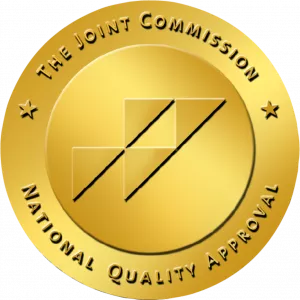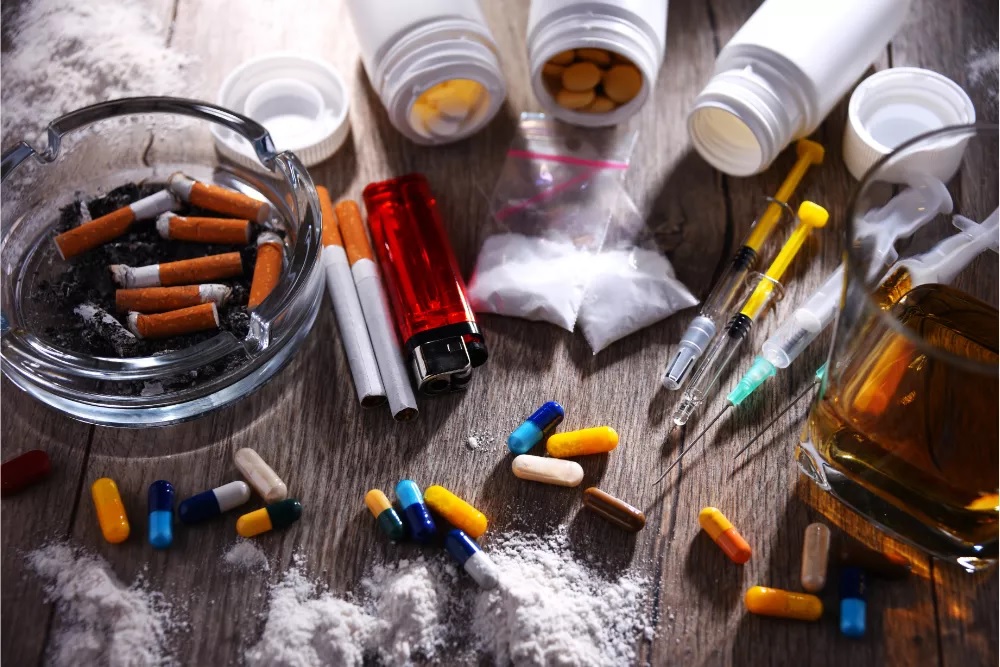Polysubstance abuse is particularly dangerous as certain substances can react with each other in unexpected and even fatal ways, and users are often unaware of these risks. Read on as Avenues Recovery explains polysubstance abuse’s definition, causes, symptoms, and dangers of polydrug use.
What is Polysubstance Abuse?
Simply put, polysubstance abuse is defined as mixing drugs and/or alcohol, or taking one substance while still under the influence of another. Mixing substances can significantly intensify the effects of both, causing a more powerful and longer-lasting high. While many engage in polydrug use intentionally, polysubstance abuse can also occur unintentionally. This is when drug users are sold drugs that have been cut with other substances such as lacing other drugs with fentanyl. The user is unaware of the toxic combination they’re ingesting, and fatal overdoses often occur due to this.
Common Polydrug Combinations
Research reveals that the three substances most commonly abused together – in different combinations – are alcohol, heroin, and cocaine. Other studies found that cannabis, opioids, amphetamines, benzodiazepines, hallucinogens, and inhalants are often abused in different combinations as well.
Some people like to combine stimulants (or “uppers”) with other stimulants, or depressants (a.k.a “downers”) with other depressants. Others prefer a combination of stimulants and depressants. It is also common for people with polysubstance abuse to mix drugs with alcohol, which is also a depressant. Whatever the case, mixing drugs with alcohol or other substances always carries a real and dangerous risk.
Some examples of stimulants are:
- Caffeine
- Cocaine
- Ecstasy
- Methamphetamines (including ice, speed, base, crystal, and crystal meth)
- Dexamphetamine (a prescription drug used for ADHD and narcolepsy)
Examples of depressants are:
- Alcohol
- Heroin
- GHB
- Ketamine
- Benzodiazepines (i.e. Xanax, Valium etc.)
- Opioids (i.e. M.S. Contin, OxyContin, methadone, codeine, buprenorphine etc.)
Some other substance combinations include meth with alcohol, cocaine with alcohol, tobacco with cannabis (smoked together), alcohol with ecstasy, benzos with alcohol, and any downer with meth.
Seven Reasons Why People are Polysubstance Dependent
You may wonder, why aren’t people happy with using one drug alone? People will mix substances for a variety of reasons.
1. Polysubstance abuse disorder may develop as one tries to increase the effects of one drug and bring on a stronger high. For example, one might smoke cigarettes while on ecstasy, or drink alcohol while under the influence of cocaine.
2. It may be a way to reduce painful withdrawal symptoms when one drug wears off. For example, one might take a sleeping pill or use cannabis when coming down from ecstasy.
3. In an attempt to replicate the effects of a different drug they were really looking for but could not obtain. This drug cocktail seems like the “next best thing”.
4. Some people end up become polysubstance dependent because it “seemed like a good idea at the time”. Oftentimes people mix drugs/ alcohol while already under the influence of another substance, or because everyone else around them is mixing substances.
5. To try and wean themselves off of another substance. Sometimes people try to cut down their use of one substance, and they then find themselves using more of another substance in an attempt to self-medicate their withdrawal symptoms. For example, someone trying to cut down on their meth use might begin drinking more alcohol when they feel stressed or unable to sleep.
· These situations must be handled with extreme caution, since an individual may find themselves addicted to two substances rather than one.
6. Sometimes polysubstance use happens unintentionally, when people are sold drugs that have been cut (i.e. fentanyl-laced weed) by unscrupulous drug dealers. The drug user has no idea what they are ingesting, and this can result in a fatal overdose.
7. Another form of unintentional polysubstance use may result when a patient is prescribed one medication without informing their doctor of any medications they are already taking. The two medicines may interact in a negative and even dangerous way.
· Always inform your doctor of any medications you are currently taking before receiving a prescription for a new medication.
Common Risk Factors of Polysubstance Abuse
Interestingly enough, certain factors have been shown to increase the risk of polysubstance abuse. A study that looked at the patterns and prevalence of polydrug use identified the following factors:
- Age – The younger the person, the greater the chances of them abusing multiple substances.
- Lower Education – In general, lesser educated populations are more likely to wind up abusing multiple substances.
- Heavy alcohol or tobacco use – Severe and prolonged use of tobacco and/or alcohol increases the chances of polysubstance abuse and addiction.
- Disability – Individuals who live with a disability or physical handicap are more prone to engaging in polysubstance abuse.
- Race – White/ Caucasian people have proven to be more likely to develop polysubstance abuse disorder.
- Unemployment – Unemployed individuals are at a greater disadvantage, and therefore a greater risk of engaging in polysubstance abuse.
- Emotional Disorders – Pre-existing mental health conditions or co-occurring disorders such as depression, anxiety or similar, all increase one’s likelihood of abusing multiple substances.
Other understandable causes of polysubstance use and abuse include high-stress levels, trauma, a family history of substance abuse, and easy access to drugs.
Signs and Symptoms of Polydrug Use
There are a variety of symptoms that accompany polysubstance abuse. If you are concerned that a friend or loved one is abusing multiple substances, look out for the following signs:
- Significant changes in behavior or personality
- Neglect of schoolwork, work, and familial obligations, and/or relationships
- Loss of interest in old hobbies
- Changing social circles
- Increased irritability and mood swings
- Evasive and secretive behavior
- Visible signs of intoxication – including:
- Bloodshot eyes
- Drooping eyelids
- Dilated pupils
- Loss of coordination
- Slurred or fast speech
- Jaw clenching
- Financial troubles, and a constant need for money (manifested by asking or stealing)
- Frequent doctor visits (to obtain drug prescriptions)
- Random periods of disappearance, with no explanation
- Increase of health issues and/or bodily injuries
- Run-ins with the law - DUIs, arrests etc.
Dangers and Risks of Polysubstance Abuse Disorder
Polysubstance abuse can pose many dangers. According to the National Institute of Health (NIH),] “Indeed, polysubstance use has consistently been associated with worse treatment outcomes, including poorer treatment retention, higher rates of relapse, and a threefold higher mortality rate compared to mono-substance users.” [1] Furthermore, according to the Centers for Disease Control (CDC), in 2019 alone, nearly 50% of all recorded drug overdose deaths involved multiple drugs [2].
Because polysubstance abuse involves mixing two substances that are already lethal and addictive on their own, the combination can often be explosive. Effects can be both short and long-term, and run the gamut of manageable health conditions to death. Although effects will always differ from one individual to another, (depending on drug purity, health, age, medical history of the person using, setting of use etc.) there are a number of dangers and risks associated with polysubstance abuse.
Dangers of Mixing Stimulants
When mixing stimulants (such as ecstasy, cocaine, meth, and amphetamines), risks include:
- Brain injury
- Liver damage
- Heart attack
- Stroke
- Severe cardiovascular problems
- Anxiety and/ or panic attacks
Dangers of Mixing Depressants
Combining depressants (such as heroin, morphine, oxycodone, hydrocodone, fentanyl, and benzodiazepines) may result in:
- Brain damage
- Severe organ damage
- Fatal accidents and injuries (due to disorientation)
- Overdose
- Death
Risks of Mixing Stimulants with Depressants
Some people mistakenly think that combining stimulants and depressants balances or “cancels out” the negative effects of each. However, mixing uppers and downers is always unpredictable and can even mask the effects of one or both drugs – resulting in an overdose. Some examples include:
- Using meth and alcohol together places great strain on the heart, which can lead to severe cardiovascular issues (especially in those with pre-existing heart conditions).
- Drinking alcohol while on cocaine produces cocaethylene, a toxic chemical with dangerous consequences.
- Smoking tobacco and cannabis together increases exposure to tar and carbon monoxide, which can result in bronchitis, respiratory tract infection, and cancer.
- Drinking alcohol while on ecstasy can cause severe dehydration, resulting in kidney failure and heat stroke.
Polysubstance Dependence and Overdose
Because the ramifications of polysubstance abuse are so terrible, it’s important to be aware of the signs of overdose and the steps to be taken when someone is overdosing.
Signs of overdose (when mixing stimulants) include:
- Fast or labored breathing
- Elevated body temperature
- Nausea and/or vomiting
- Chest pains
- Tremors and/or seizures
Signs of overdose (when mixing depressants) include:
- Slowed breathing
- Faint pulse
- Confusion and disorientation
- Passing out
If you see someone displaying any of the abovementioned signs of overdose, follow these steps:
- Call 911 immediately.
- If available, administer Naloxone.
- Try to keep the person conscious and breathing.
- Lay the person on their side, to prevent choking or aspirating.
- Remain with the person until emergency medical services arrive.
In many states, there are “Good Samaritan” laws that will protect the person who called for help from legal trouble afterwards. Never let fear of the consequences prevent you from saving a life!
Polysubstance Abuse Treatment at Avenues Recovery
Polysubstance abuse is a serious condition that should not be taken lightly and cannot be self-treated. The best option will always be to attend a licensed rehab facility, where one can detox under the supervision of medical professionals and receive therapy to address the root causes that led to their addiction.
If you or a loved one is suffering from polysubstance dependence, reach out to Avenues Recovery Center today to speak to a skilled and friendly treatment specialist. Our team will walk you through your options and guide you to the level of care best suited to your needs. We offer a variety of treatment programs and extensive resources to help you recover from addiction.
Begin your journey home today!
Sources
[2] www.cdc.gov



